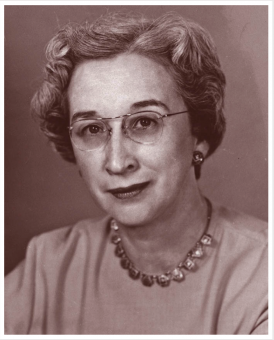Biography of Sarah Elizabeth Stewart, MD, PhD

Sarah Elizabeth Stewart, MD, PhD
Dr. Sarah Elizabeth Stewart (Aug. 16, 1905–Nov. 27, 1976) was a Mexican-American researcher who pioneered the field of viral oncology research. She was born on August 16, 1905, in Tecalitlán, Jalisco, Mexico. [1] She did her undergraduate work at the New Mexico State University graduating with a Bachelors of Science in 1927. She went on to earn a master’s degree from the University of Massachusetts Amherst in 1930. In 1935, she began working at the National Institutes of Health (NIH) completing a Ph.D. in microbiology from the University of Chicago in 1939.
In 1944, Stewart sought to study the link between animal tumors and viruses. Unconvinced, NIH executives rejected her proposal. Subsequently she resigned from the NIH and came to Georgetown University as a faculty member, teaching microbiology at the School of Medicine. She was encouraged to complete her M.D. and in 1949, she became the first women to be awarded a Doctorate of Medicine from Georgetown University School of Medicine. [2]
In 1951, having completed an internship, she returned to NIH to work with her colleague Dr. Bernice Eddy. Stewart and Eddy developed an interest in researching viral links to cancer based on the pioneering research of Jonas Salk, whose work led to a vaccine for the virus which caused polio. In 1953, Stewart and Eddy were among the first to discover the cancer-causing, or polyomavirus. [2] Though, it wasn’t until 1958 that Stewart and Eddy were successful in growing the virus which now bears their names, the SE (Stewart-Eddy) polyomavirus. Stewart and Eddy were the first to successfully demonstrate, through Koch’s postulates, that cancer-causing viruses could be spread from animal to animal. [3]
As a result of their work, Stewart and Eddy were nominated twice for the Nobel Prize. In 1965, President Lyndon B. Johnson presented Stewart with the Federal Women’s Award for her contributions to the field of cancer research.
In 1971, Dr. Stewart returned to Georgetown as a full professor to teach in the department of pathology. Shortly thereafter, she retired to New Smyrna Beach, Florida where, on November 27, 1976, she died of the disease she fought so hard to study.
References:
Wikipedia- Sarah Stewart, MD, PhD- February 2009
Cancer Research, Sarah Stewart, Obituary, Volume 37, 4675
Stanley, Autumn. Mothers and Daughters of Invention, Page 165. 1993, Rutgers University Press.
Smith, J.Y. (1976-12-08). “Dr. Sarah Stewart, Cancer Research, Dies”. The Washington Post: p.C15.
Sarah Stewart (M’49): Leading the way to a novel vaccine
In the 1990s, scientists at Georgetown University Medical Center — led by Richard Schlegel, M.D., Ph.D., currently the Oscar B. Hunter Chair of Pathology — gained renown for their seminal contributions to the development of a human papillomavirus (HPV) vaccine. The technology they co-invented, for which Georgetown received a number of international patents, has helped to prevent cervical cancer in millions of women.
This breakthrough would not have been possible without the pioneering work of another Georgetown pathologist, Sarah Stewart (M’49). The first woman to graduate from Georgetown Medical School, Stewart was a model of persistence. Initially unable to enroll because of her gender, despite holding a PhD in microbiology and working at the National Institutes of Health (NIH), she took a job as a Georgetown instructor in order to be eligible to attend medical school classes. She enrolled full-time once the school began admitting women in 1947.
Defying the opinion of the scientific establishment, Stewart believed that viruses could cause cancer. After receiving her M.D., she carried on with her research at the NIH. She and colleague Bernice Eddy identified a virus now called the Stewart-Eddy Polyomavirus, and in 1958, they demonstrated that the virus could cause tumors in animals—definitively proving the virus-cancer link.
Excerpted from the article “Equal Shot” by Sarah Piccini, published in Georgetown Magazine, Spring 2021
